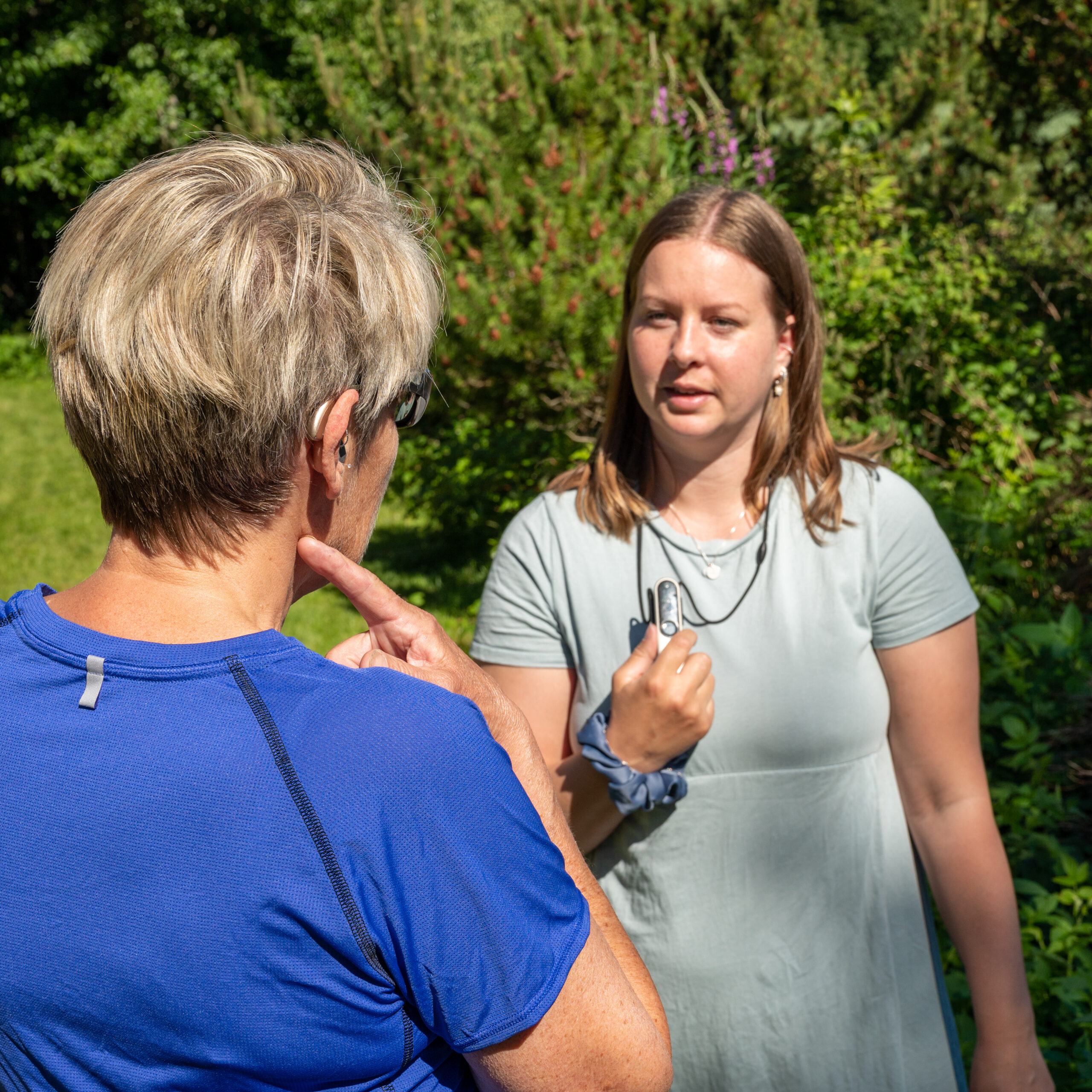- Deafblindness
- Syn
- Hearing
- Mobility
- Communication
- ICT
- Research projects
- Publications
- Conferences and webinars
- Video archive
Deafblindness

Deafblindness is a term used to describe a combined visual and hearing impairment where the sensory losses mutually reinforce each other. Deafblindness is considered a separate disability.
Deafblind means a person who has such a high degree of combined visual and hearing impairment that it causes significant difficulties in daily life.
Many deafblind people have a visual or hearing impairment or both - but the combination of sensory impairments reduces their ability to utilise a visual or hearing impairment. Very few deafblind people are completely deaf and blind.
Deafblindness involves major limitations in relation to:
- Communication
- Information
- Freedom of movement
A distinction is made between two groups of people with combined visual and hearing impairment/deafblindness:
- Deafblind people: When the combined sensory loss occurs after language is established, the persons are labelled as deafblindblind. Some of these are:
- Born blind/visually impaired and later becomes hearing impaired
- Born deaf/hard of hearing and later becomes visually impaired
- Born normally sighted and hearing, but later suffered both vision and hearing loss
- Deafblind children: When the combined sensory loss is congenital or occurs before language is established, the person is labelled as born deafblind. People born deafblind often have other disabilities in addition to deafblindness.
Causes of deafblindness
- Rare diseases and infectious diseases that involve both visual and hearing impairment
- Random combinations of different injuries/diseases that affect both visual and hearing function
- Usher syndrome. People with this syndrome are born hard of hearing or deaf, and their vision gradually deteriorates as a result of the eye disease Retinitis pigmentosa.
- CHARGE syndrome is a rare condition with multiple severe congenital malformations. CHARGE syndrome is one of the most common causes of combined sensory loss in the Western world.
- Age-related diseases that affect vision and hearing
A person is identified as deafblind on the basis of medical information about vision and hearing, as well as a survey of functional vision and hearing. The regional centres have this responsibility.
